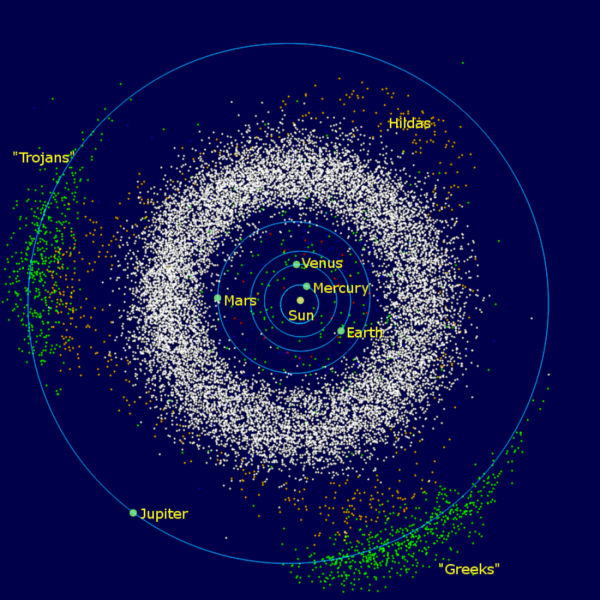Asteroid Belt Between Mars And Jupiter Is A 'Melting Pot' Of Diverse Celestial Objects

The main asteroid belt, located between Mars and Jupiter, contains millions of these objects. While scientists believed that they shared a common origin or similar composition, new studies are showing the vast diversity of asteroids with the belt acting as a "melting pot of objects."
The latest research suggests that our solar system was, in its infancy, a highly chaotic place. With planets such as Jupiter far away from Earth and the sun, a new study concludes the gas giant could have traveled as far inward as where Mars is currently located. If Jupiter could wander that far into the solar system, its gravitational pull could have drastically altered the composition of the main asteroid belt.
According to the Harvard-Smithsonian Center for Astrophysics, CfA, the main asteroid belt contains millions of these rocky objects that failed to develop, the result of Jupiter's gravitational influence. The composition of these asteroids varied, from wet to dry, based on the distance from the sun and new research revealed these objects did not all originate from the same location.
Researchers from CfA and the Paris Observatory used the Sloan Digital Sky Survey to analyze the composition of thousands of asteroids from the main belt. The study, published in the journal Nature, was led by Francesca DeMeo of CfA. The observations revealed even more variety between asteroids than previously believed due to migrating planets.
DeMeo said in a statement, "We found that the giant planets shook up the asteroids like flakes in a snow globe." Jupiter traveling inward could have pulled nearly 90 percent of the main belt with it, leaving just a tenth of the asteroids behind. On its way back, the gas giant would have pulled objects from Venus back to the main belt. Traveling outward, Jupiter and Saturn could have pulled objects from as far away as Neptune to the main asteroid belt.
The new insights could bolster a theory that holds that the impact of asteroids brought the majority of water to Earth, notes CfA. With Jupiter traveling inward, the planet would bring more asteroids closer to Earth, increasing the number of impacts. If that proves true, that would make finding life on other planets more difficult, if water needs to be delivered via asteroids. As CNN reported, new insight into the composition of the main asteroid belt will give researchers on Earth a better understaning of Near-Earth Objects.
© Copyright IBTimes 2024. All rights reserved.





















